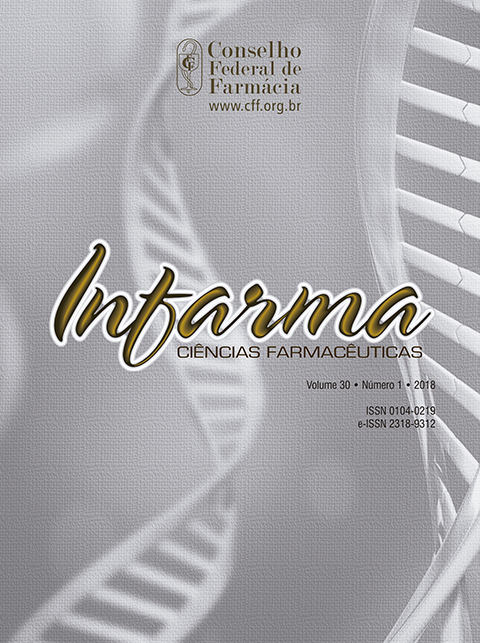Potential drug interactions in polymedicated patients from Novo Hamburgo, RS, Brazil
DOI:
https://doi.org/10.14450/2318-9312.v30.e1.a2018.pp21-29Keywords:
chronic diseases, polypharmacy, drug interactions.Abstract
The life expectancy of the world population has increased, with the consequent increasing of the level of chronic degenerative diseases and the use of concomitant medications, featuring polypharmacy, leading to the risk of drug
interactions (DI). Thus, this study aimed to identify possible DI among the drugs used by polymedicated patients from Novo Hamburgo, RS, Brazil. A cross-sectional study was conducted with volunteers from a research project
during their initial interview. The socio-demographic data, the pathologies, the medicines used and their drugs interactions were evaluated. The diseases were classified according to the International Disease Code (CID-10), and medicines used by patients were classified according to the Anatomical Therapeutic Chemical standards (ATC). Drug interactions were identified and classified as recommended by literature and the Micromedex® system. Sixty-seven
patients (age 62±9 years, mostly female, 74.6%) participated in the study. 76.1% of patients were exposed to some DI. At all, 157 possible DI were identified with an average of 3.0±2.2 interactions per patient. Of these, 69.4% were classified as moderate, 19.8% severe and 10.8% mild. 51.6% DI were mediated by pharmacodynamic mechanisms, 31.9% were pharmacokinetic-related and 16.5% were mediated by both mechanisms. The most prevalent DI was between acetylsalicylic acid and hydrochlorothiazide. There was a high rate of DI among the participants of the research project. Most of the identified DI were severe or moderate and hence can bring considerable risks to patient
health. Thus, the DI can jeopardize patient safety, highlighting the importance of this matter and the need to assess and monitor drug therapy.
Downloads
Published
How to Cite
Issue
Section
License
Authors who publish in this journal agree to the following terms:
- Authors retain the copyright and grant the journal the right of first publication, with the work simultaneously licensed under the Licença Creative Commons Attribution which allows the sharing of work with acknowledgment of authorship and initial publication in this journal.
- Authors are authorized to take additional contracts separately, for non-exclusive distribution of the version of the work published in this journal (e.g. publish in institutional repository or as a book chapter), with acknowledgment of authorship and initial publication in this journal.
- Authors are allowed and encouraged to publish and distribute their work online (e.g. in institutional repositories or on their personal page) at any point before or during the editorial process, as this can generate productive changes as well as increase the impact and Citation of published work (See O Efeito do Acesso Livre ).


